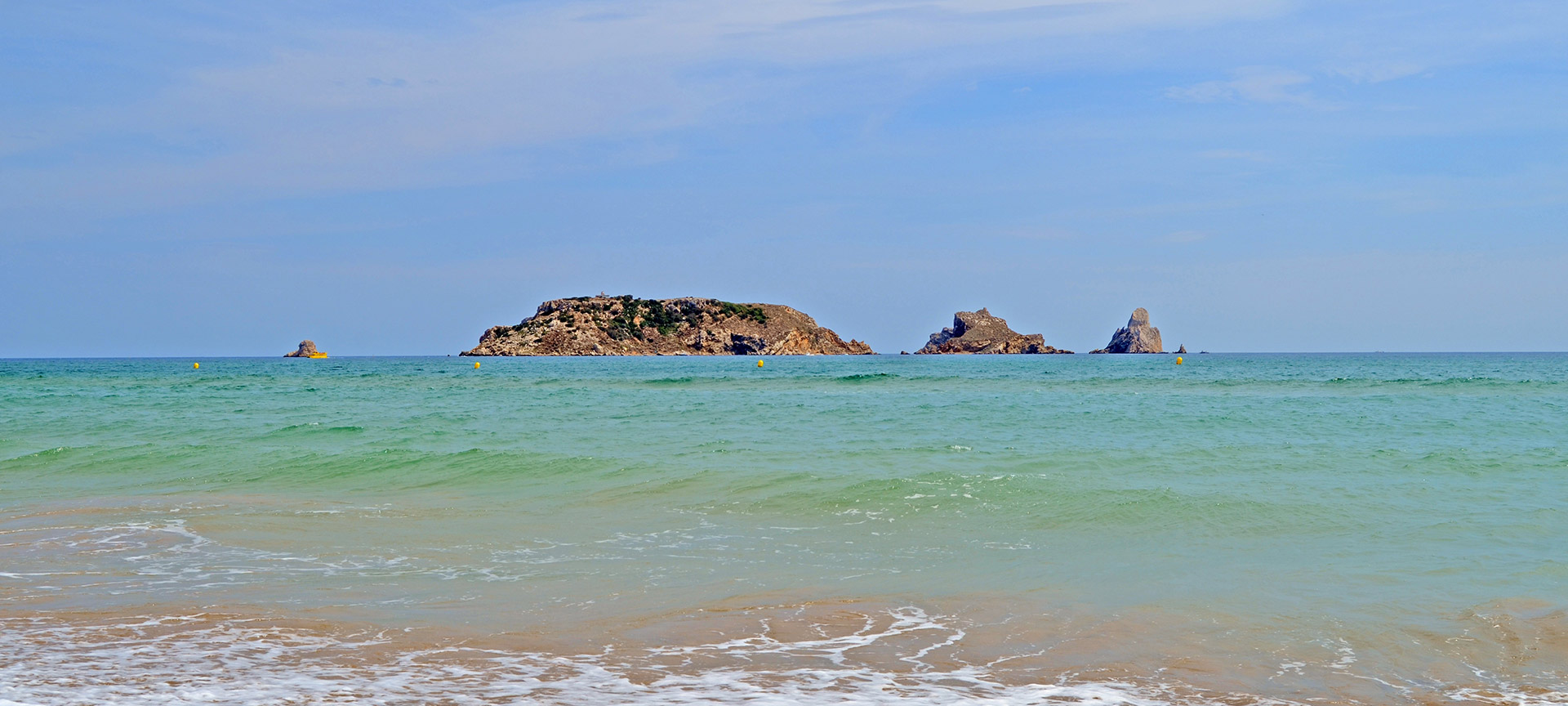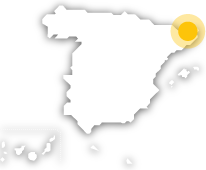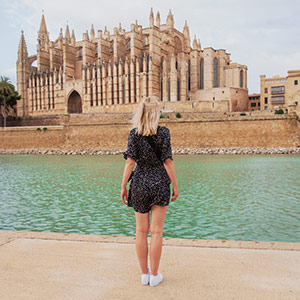
Montgrí, Medes Islands and Lower Ter Natural Park

Known for its unique biodiversity and marine landscapes
Found on the Costa Brava, between Alt and Baix Empordà, it preserves the natural essence of the Mediterranean region of Catalonia. The nature reserve invites you to explore impressive trails on land and routes across Medes Islands to discover its incredible seabeds.
Explore this natural gem that converges between imposing mountains, golden beaches and the Ter River. The diversity of its landscapes offers unique settings of immeasurable beauty. The capes, cliffs, coves, gulfs, islets, arches and caves on the nature reserve's coastline form a dynamic historical relief that it is worthy of admiration for being one of the best marine flora and fauna reserves in the western Mediterranean region. The small Medes archipelago, made up of seven islands, has cliffs that jut out into the sea to a depth of about 50 metres, where species such as yellow-legged gulls, the European shag, the peregrine falcon, and the pallid swift roam. Its caves and underwater tunnels are home to a highly biodiverse seabed, where you can see coralligenous formations, red gorgonians and red coral, as well as different fish species, such as grouper, milana, corbajo, and bluefin tuna, among others. On land, its 10 kilometers of coastline with cliffs almost 100 meters high hide beautiful coves, natural beaches, and extensive dunes home to vulnerable species of great interest, such as the Kentish Plover.
Montgrí, Medes Islands and Lower Ter Natural Park
Girona (Catalonia)
Activa JS
What you need to know
-
Cultural information
The islands' old lighthouse, registered in 1868 and a former spiritual, military, and pirate refuge, is now a protected and modernized space. Guided tours and a variety of evening activities are available at the Mediterranean Museum in Torroella de Montgrí. The Anchovy and Salt Museum of L'Escala features exhibits on artisanal fishing and interesting cultural routes. A visit to the Empúries Museum and the Ullastret Ruins is also recommended.
-
Environmental information
It is home to areas of great environmental value, where birdwatchers have access to various observatories to observe species native to wetlands and coastal sandbanks. This territory also offers the possibility of observing wildlife, such as reptiles and amphibians in spaces such as the lagoon recovered through the Life Emyste project, near La Fonollera mountain. Exploring underwater routes accompanied by a guide who explains the different species and habitats of the islands is a real pleasure.
-
Information for visits
There are many itineraries signposted land, cycle and underwater routes for various leisure activities such as scuba diving in Medes Islands; sailing, windsurfing, kitesurfing and boat rentals in port of L'Estartit; hiking and bicycle tourism.The Can Quintana Interpretation and Documentation Centre is located in the Museum of the Mediterranean: c/ Ullà, 27-31 · 17257 Torroella de Montgrí (Girona).


